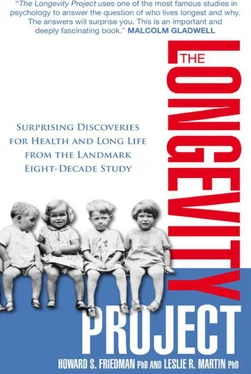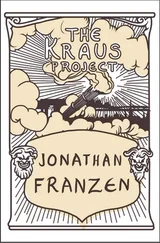During the Second World War, Dr. Keys, well-regarded for his expertise in human physiology, was asked by the U.S. government to develop a food bundle or ration pack that was nutritious and compact and could be readily used by combat troops. His package—of dry biscuits, protein from peanuts or sausage, and chocolate—was modified in a number of ways and became the famous K ration. Keys liked to claim that the K ration was named after him, but there is evidence that the K was simply chosen by the bureaucracy as a distinct letter of the alphabet. 43 43 For more on the K ration see Franz A. Koehler, “Special Rations for the Armed Forces, 1946-53,” QMC Historical Studies, Series II, No. 6, Historical Branch, Office of the Quartermaster General, Washington, DC, 1958.
After the war Dr. Keys, noting the significant incidence of heart disease in western societies, began studying its causes. He is the person most responsible for the idea that a high-fat diet leads to high cholesterol and heart disease. Like Ignaz Semmelweis, the nineteenth-century doctor who blamed the “child-bed fever” of mothers in labor on germs but was met with scorn and disbelief, Keys also faced skepticism and personal attacks. Yet he persisted, eventually recommending the so-called Mediterranean diet that emphasizes fruits, vegetables, beans, cereals, nuts, and unsaturated fat. Although his idea about dietary fat and heart disease remained quite controversial for many years (and still has significant critics arguing over the details), it became one of the most important topics in cardiology and public health.
In 1961 Keys was featured on the cover of Time magazine. He made it clear that he thought that Americans were eating too much. Yet today, half a century later, Americans eat even more, and obesity rates are much, much higher. He also made it clear that Americans were eating too much saturated fat. Keys himself did not avoid red meat; he just limited how much of it he ate each week. Today everyone has heard about cholesterol, many are obsessed with it, and countless individuals have switched to unbalanced, unproven diets. Cardiovascular disease remains the leading cause of death. Simply providing information (“You eat too much”) and lists of recommendations (“Eat less fat”) to the public turned out to be an ineffective public health strategy.
Ancel Keys strongly believed that physical activity was essential to good health—and he continued his vigorous activities throughout his life. But he preferred staying active in the service of interests, chores, and hobbies, such as travel or gardening. He was not a proponent of marathons or bodybuilding contests. He stayed trim and active not because of any secret, special exercise regimen but because of lifelong patterns that he developed. We decided to focus intensively on figuring out the physical activity patterns of all the Terman subjects. Did the active children become active adults? What was the personality of those who stayed active? Was physical activity very important to health and long life?
Because we have thousands of pieces of information that were collected across eight decades on over 1,500 Terman participants, we sit looking at almost 10 million facts and pieces of data. What kinds of health-relevant behavior could be measured throughout life? How could we best assess physical activity?
These days, exercise researchers like to use a measure called the metabolic equivalent, or MET. One MET describes your calorie consumption when you are at rest—you are alive but not doing anything. Serious jogging is 8 METs. Hard running is 18 METs. Throughout their lives, the Terman participants were asked about their hobbies, sports, and activity levels. So we are able to construct good estimates throughout the decades that are comparable to those that modern-day researchers use.
Some Terman participants liked reading, movies, and board games. Others preferred gardening, boating, woodwork, photography, or travel. Still others chose team sports, handball, hunting, hiking, or skiing. By assigning a MET value to each activity, Peggy Kern and the rest of our team were able to compute the average physical activity of each Terman participant. Not only that, but we could examine how activity levels changed across the decades, and thus be better able to make sensible, valid prescriptions for optimally active lifestyles. 44 44 For one of our studies of physical activity, see M. L. Kern, C. A. Reynolds, and H. S. Friedman, “Predictors of Physical Activity Patterns across Adulthood: A Growth Curve Analysis,” Personality and Social Psychology Bulletin (in press, 2010) .
It is common to hear advice to exercise more in order to stay healthy. In other words, make up your mind to be healthy and get out on the tennis or basketball court. On New Year’s Day, many resolve to spend more time in the gym; by March, well, the gym has empty slots. This exercise advice comes from the common observation that those who are physically active are generally healthier. But this advice ignores your individual personality and your past history of activity or inactivity. What if you are already a tennis player? Should you then add triathlon competitions? What if you used to play a lot of tennis but now prefer strolling from store to store, shopping? Are you more or less healthy than a couch potato?
A different way to think about physical activity is to put people into categories. Some seem very active—the jocks—and some seem to have little interest in active recreation—the nerds. If this approach is more valid in capturing reality, then there is little point in berating the nerds—they simply are not going to develop and sustain a very active life. But if the categories are loose ones, perhaps some nerds might be induced to increase their physical activity. And jocks could be encouraged to maintain their activities over many years, rather than fading with age (as many do).
On the occasion of his seventieth birthday, Mark Twain said:
I have never taken any exercise, except sleeping and resting, and I never intend to take any. Exercise is loathsome. And it cannot be any benefit when you are tired; and I was always tired. 45 45 The Mark Twain quotes are at http://www.pbs.org/marktwain/learnmore/writings_seventieth.html .
But it is what Twain said next that especially piqued our research interest:
I desire now to repeat and emphasize that maxim: We can’t reach old age by another man’s road. My habits protect my life, but they would assassinate you.
We knew there were huge differences in the Terman subjects’ personalities, and so we decided to investigate all of these possibilities. Are some individuals basically more active than others? Do their activity levels persist over time? What is relevant to health and long life?
Active Children, Active Adults?
In 1922, when they were about eleven years old, the Terman children were evaluated in terms of their physical activity levels. For example, their parents indicated on a five-point scale how much the child enjoyed playing games that required lots of exercise. They also rated the children’s energy levels and described their children’s hobbies. Then Dr. Terman asked about a wide variety of activities, ranging from flying kites and hiking, which were popular among the boys, to dancing and playing jackstones (now called jacks), popular among the girls.
In adulthood, the Terman subjects provided all sorts of information about their hobbies, and as noted, we coded each of these as to how active each was. Even in their old age, the participants shared enough information for us to evaluate whether they were participating in sports, active in hobbies like gardening, engaging in exercise programs, and so on. No study had ever before been able to look in such detail at physical activity across the life span, from childhood through aging and until death.
Читать дальше











